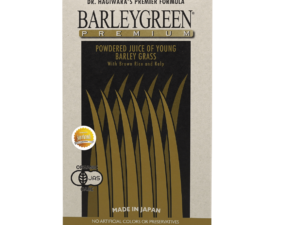How to cure chronic constipation permanently? – Wellness Group
Over 16% of adults worldwide experience persistent digestive discomfort that disrupts their daily lives. This widespread challenge often stems from irregular bowel movements and incomplete relief from quick fixes. While temporary solutions might offer momentary comfort, lasting results require understanding the body’s natural rhythms.
Effective management involves more than occasional dietary changes. Research shows combining consistent hydration, fiber-rich meals, and physical activity creates sustainable improvements. Many people overlook how stress management and sleep patterns directly impact digestive function.
Healthcare professionals emphasize personalized approaches for lasting results. Simple adjustments like establishing regular bathroom routines or exploring probiotic-rich foods often yield better outcomes than extreme measures. For some individuals, targeted medical guidance becomes essential to address underlying causes.
Key Takeaways
- Hydration and dietary fiber form the foundation of digestive wellness
- Physical activity stimulates natural intestinal muscle contractions
- Stress reduction techniques improve gut-brain communication
- Medical consultation helps identify hidden contributing factors
- Consistent routines support long-term regularity
Introduction to Chronic Constipation
Many individuals experience bowel irregularities that extend beyond temporary discomfort. When symptoms like infrequent stools or incomplete bowel emptying persist for three months or longer, it signals a chronic condition requiring attention. This ongoing issue affects 1 in 7 adults and 1 in 3 children globally, with women facing twice the risk compared to men.

Click to 了解更多
Daily life disruptions range from physical strain to emotional stress. Office workers might avoid team lunches, while parents could struggle with childcare routines. Older adults and pregnant individuals face higher vulnerability due to natural bodily changes.
| Factors | Chronic Condition | Temporary Issue |
|---|---|---|
| Duration | 3+ months | Days/weeks |
| Primary Causes | Dietary habits, medical conditions | Travel, stress |
| Common Symptoms | Straining, lumpy stools | Mild discomfort |
| Demographics | Women, seniors | All ages |
Recognizing persistent symptoms early helps prevent complications. While occasional irregularities resolve naturally, long-term patterns need professional evaluation. Simple tracking of bowel frequency and stool consistency provides valuable insights for healthcare discussions.
Cultural factors in Malaysia, like spicy food preferences, may influence digestive patterns. Local clinics report higher consultation rates during festive seasons when dietary habits change temporarily.
Understanding Chronic Constipation and Its Causes
Recognizing persistent digestive issues starts with understanding normal patterns. Healthy bowel movement frequency ranges from three times daily to three times weekly. What matters most is consistent personal rhythms rather than strict numerical targets.
Common Symptoms and Warning Signs
Persistent digestive struggles often show through physical signals. Key indicators include straining during elimination, passing lumpy stools, and feeling incomplete after using the toilet. Some people experience abdominal bloating or reduced appetite alongside irregular patterns.
Red flags demanding medical attention include sudden habit changes, blood in stools, or unexplained weight loss. These could signal underlying conditions needing professional evaluation. Tracking stool consistency using visual guides helps identify problematic trends early.
Impact on Daily Life
Ongoing digestive discomfort affects more than physical health. Many report decreased work productivity or avoidance of social gatherings. Parents might struggle with childcare routines, while office workers could face discomfort during long meetings.
Common triggers include low-fiber diets, inadequate hydration, and sedentary lifestyles. Stress amplifies these issues by disrupting gut-brain communication. For those needing extra support, targeted gut health supplements can complement lifestyle adjustments.
Left unaddressed, persistent symptoms may lead to complications like hemorrhoids or anal fissures. Simple changes in meal timing and bathroom routines often create meaningful improvements. Remember – gradual progress beats quick fixes for lasting results.
How to Cure Chronic Constipation Permanently?
Breaking free from ongoing digestive struggles requires a tailored strategy combining science-backed methods. Effective treatment focuses on restoring natural rhythms through gradual, manageable changes rather than drastic overhauls.
Nutrition forms the cornerstone of lasting improvement. Increasing soluble fiber intake helps soften stools while insoluble fiber promotes healthy bowel movements. Pairing this with adequate hydration creates optimal conditions for digestive efficiency. Many people find success by establishing consistent meal times that align with their body’s natural clock.
Physical activity plays a crucial role beyond general health. Gentle exercises like brisk walking stimulate intestinal muscles, helping maintain regularity. Stress-reduction practices such as deep breathing exercises improve gut-brain communication – a key factor often overlooked in digestive health.
For those needing extra support, colon-supporting probiotics can enhance dietary efforts. Most individuals notice gradual improvements within 4-6 weeks, though full restoration of regular patterns might take 3-6 months. Persistent cases benefit from professional guidance to address potential underlying conditions.
True success comes from maintaining these habits long after symptoms ease. Tracking progress through simple journals helps identify personal triggers and effective solutions. Remember – sustainable wellness grows from daily choices, not temporary fixes.
Dietary Changes for Lasting Relief

Click to 了解更多
What you eat daily shapes your gut health journey. Strategic food choices work with your body’s natural processes to create comfortable digestion. Two essential elements form this nutritional foundation: fiber-rich meals and proper hydration.

Incorporating High-Fiber Foods
Fiber acts like nature’s broom for your digestive system. There are two main types that work together:
| Fiber Type | Function | Food Sources |
|---|---|---|
| Soluble | Forms gel to ease stool movement | Apples, oats, beans |
| Insoluble | Adds bulk to stimulate contractions | Whole wheat, bran, leafy greens |
Start with small increases to reach 25-30g daily. Try adding berries to breakfast or swapping white rice for brown. Malaysian favorites like roti wholemeal or ulam salads make excellent local fiber sources.
Role of Hydration and Fluid Intake
Water partners with fiber to keep things moving smoothly. Aim for 8-10 glasses daily, increasing with physical activity. Herbal teas and water-rich fruits like watermelon count toward your total.
| Hydration Tip | Benefit |
|---|---|
| Drink upon waking | Activates digestive system |
| Carry a reusable bottle | Encourages regular sips |
| Pair high-fiber meals with water | Prevents stool hardening |
Remember – dietary changes take 2-4 weeks to show full effects. Track your progress and celebrate small improvements in comfort and regularity.
Natural Remedies to Encourage Bowel Movements
Gentle solutions from nature can effectively support digestive regularity when used consistently. These approaches work with the body’s rhythms rather than forcing temporary results.
Citrus Boost for Morning Routine
Lemon water offers dual benefits when consumed morning and night. The citric acid stimulates digestive enzymes while vitamin C supports gut health. Try mixing half a lemon’s juice with warm water – this simple ritual activates intestinal muscles naturally.
Mediterranean Secret for Smooth Passage
A teaspoon of olive oil on an empty stomach creates lubrication throughout the digestive tract. Its monounsaturated fats soften stool texture while reducing intestinal inflammation. Many find this particularly helpful when combined with high-fiber breakfasts.
| Remedy | Key Component | Primary Benefit |
|---|---|---|
| Prune Juice | Sorbitol | Draws water into intestines |
| Flaxseed Oil | Omega-3 | Reduces intestinal friction |
| Ginger Tea | Gingerol | Stimulates digestion |
Dried plums remain a top choice for stubborn cases. Their natural sorbitol content acts like a sponge in the gut – absorbing water to create softer, bulkier stool. For best results, soak 3-4 prunes overnight and consume with breakfast.
Consistency matters more than quantity with these remedies. Pair them with adequate hydration and stress management for cumulative effects. Most users notice improved regularity within 2-3 weeks of daily use.
Lifestyle Adjustments and Exercise
Movement and routine form the foundation of digestive wellness. Regular physical activity stimulates intestinal muscles, creating natural momentum for bowel function. Even light exercises like brisk walking or cycling boost circulation to abdominal organs.

Consistent bathroom habits train the body’s internal clock. Visiting the toilet 15-20 minutes after meals leverages natural gastrocolic reflexes. Many find morning routines effective when paired with warm beverages.
| Activity | Frequency | Key Benefit |
|---|---|---|
| Brisk Walking | Daily 20 mins | Stimulates digestion |
| Yoga Twists | 3x weekly | Massages intestines |
| Swimming | 2x weekly | Reduces abdominal pressure |
| Core Exercises | 4x weekly | Strengthens muscles |
Ignoring the body’s signals causes stool hardening. Keep bathroom visits relaxed – try reading material or calming music. Office workers can set phone reminders for movement breaks.
Stress management complements physical efforts. Deep breathing exercises before meals improve gut-brain coordination. Pair these changes with consistent sleep schedules for cumulative benefits.
Malaysians often find success combining park walks with hydration breaks. Remember – small daily efforts create lasting improvements better than intense workouts.
Using Laxatives Wisely: Stimulant and Osmotic Options
Smart digestive health management involves understanding available tools. Three primary types of laxatives offer different approaches to relief. Bulk-forming options like psyllium work gradually by absorbing water, creating softer stools that move comfortably. These gentle solutions suit long-term use when paired with proper hydration.
Osmotic laxatives such as lactulose act differently, drawing fluid into the bowels to soften hardened waste. Many find these effective within 2-3 days of consistent use. For urgent needs, stimulant laxatives like senna trigger muscle contractions – but their strong effect means they’re best reserved for short-term situations.
Proper use starts with the mildest option and follows dosage guidelines closely. Always maintain water intake during treatment. The goal? Transition back to natural methods as regularity improves. Consulting a healthcare provider ensures personalized strategies, especially when symptoms persist beyond temporary relief.
FAQ
What dietary changes help manage chronic constipation?
Increasing fiber intake through whole grains, fruits, and vegetables softens stools and supports regular bowel movements. Pairing this with adequate water ensures fiber works effectively. Limiting processed foods and dairy may also reduce symptoms.
Can natural remedies like prune juice improve bowel movements?
Yes! Prune juice contains sorbitol, a natural laxative that draws water into the intestines. Lemon juice or olive oil may also stimulate digestion. However, these should complement—not replace—a balanced diet and hydration.
How does exercise help relieve constipation?
Physical activity strengthens abdominal muscles and stimulates intestinal contractions. Even light activities like walking for 20–30 minutes daily can encourage smoother stool passage and reduce reliance on laxatives.
Are laxatives safe for long-term use?
Stimulant laxatives (e.g., senna) should only be used short-term to avoid dependency. Osmotic laxatives like polyethylene glycol are gentler for prolonged use. Always consult a doctor before starting any laxative regimen.
Can stress worsen irritable bowel syndrome-related constipation?
Stress directly impacts gut function, often tightening muscles in the digestive tract. Techniques like yoga, meditation, or deep breathing may ease symptoms and promote healthier bowel habits over time.
When should someone see a doctor about constipation?
If symptoms persist beyond three weeks, include blood in stools, or cause severe pain, seek medical advice. A healthcare provider may recommend tests to rule out conditions like pelvic floor dysfunction or blockages.

Khloe Tan
Khloe Tan is a Certified Nutritionist, Corporate Wellness Trainer, and Holistic Health Specialist with over 15 years of experience in the health and wellness industry. She has delivered more than 100 talks nationwide, inspiring and educating diverse audiences on nutrition, lifestyle, and sustainable wellness. Her work has positively impacted over 3,000 lives, and she continues to champion holistic approaches to well-being in both corporate and personal settings.





